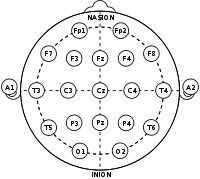
Photo from wikipedia
The use of unmanned aerial vehicles as aerial base stations (ABSs) can significantly enhance the capacity and coverage of wireless systems. In this paper, the problem of optimal ABS placement… Click to show full abstract
The use of unmanned aerial vehicles as aerial base stations (ABSs) can significantly enhance the capacity and coverage of wireless systems. In this paper, the problem of optimal ABS placement is studied while exploiting high-rise topographic features to maximize wireless coverage. In contrast to prior art that relies on simplified full line-of-sight (LoS) channel models or impractical probabilistic LoS channel models, this paper presents a novel feature-aware channel model that decisively discerns whether an air-to-ground (A2G) link is in LoS or non-LoS (NLoS) based on the topographical environment data for the target area. To resolve the challenges created by the dependence between the channel gain and the topographical environment in this feature-aware channel model, the LoS and NLoS zones in the target area are analyzed from a geometrical point of view. Then, based on the analysis results, the coverage area is derived in a tractable form and then used to develop a feature-aware ABS placement algorithm, called ABS-FA, based on particle swarm optimization (PSO). The effectiveness of the proposed approach is compared with two other baseline algorithms based on the full LoS and probabilistic LoS channel models, called ABS-LoS and ABS-Prob, respectively. Simulation results show that, depending on the topographical environment, ABS-LoS may outperform ABS-Prob, or vice versa, and even both may be very limited in some cases, because the full LoS and probabilistic LoS channel models cannot properly capture whether an A2G link is in LoS or NLoS. The results also show that the proposed ABS-FA scheme always outperforms these baseline algorithms and that, for instance, it can provide approximately 25% and 50% higher coverage performance compared to ABS-Prob and ABS-LoS, respectively. These results verify that considering a feature-aware channel model can be a very effective approach for determining the ABS location.
Journal Title: IEEE Transactions on Wireless Communications
Year Published: 2023
Link to full text (if available)
Share on Social Media: Sign Up to like & get
recommendations!